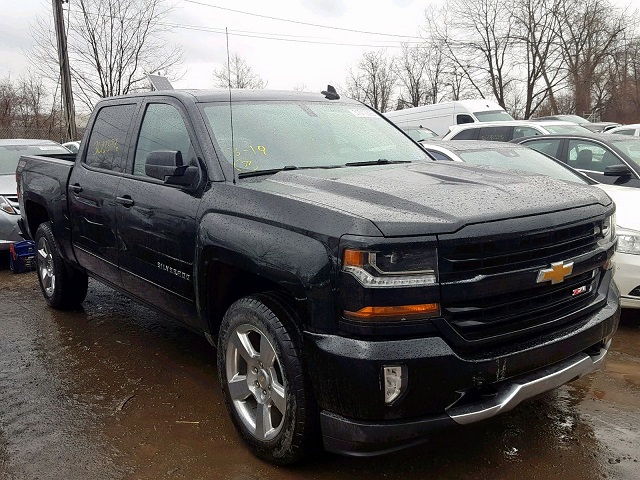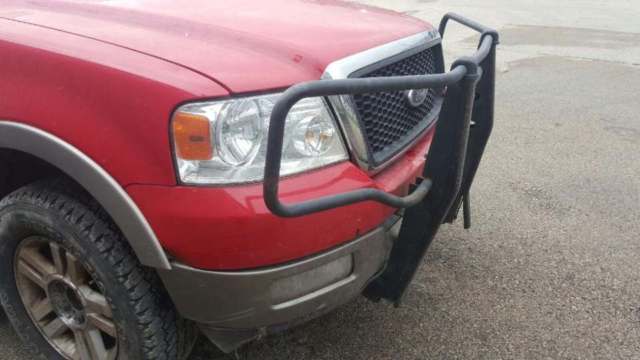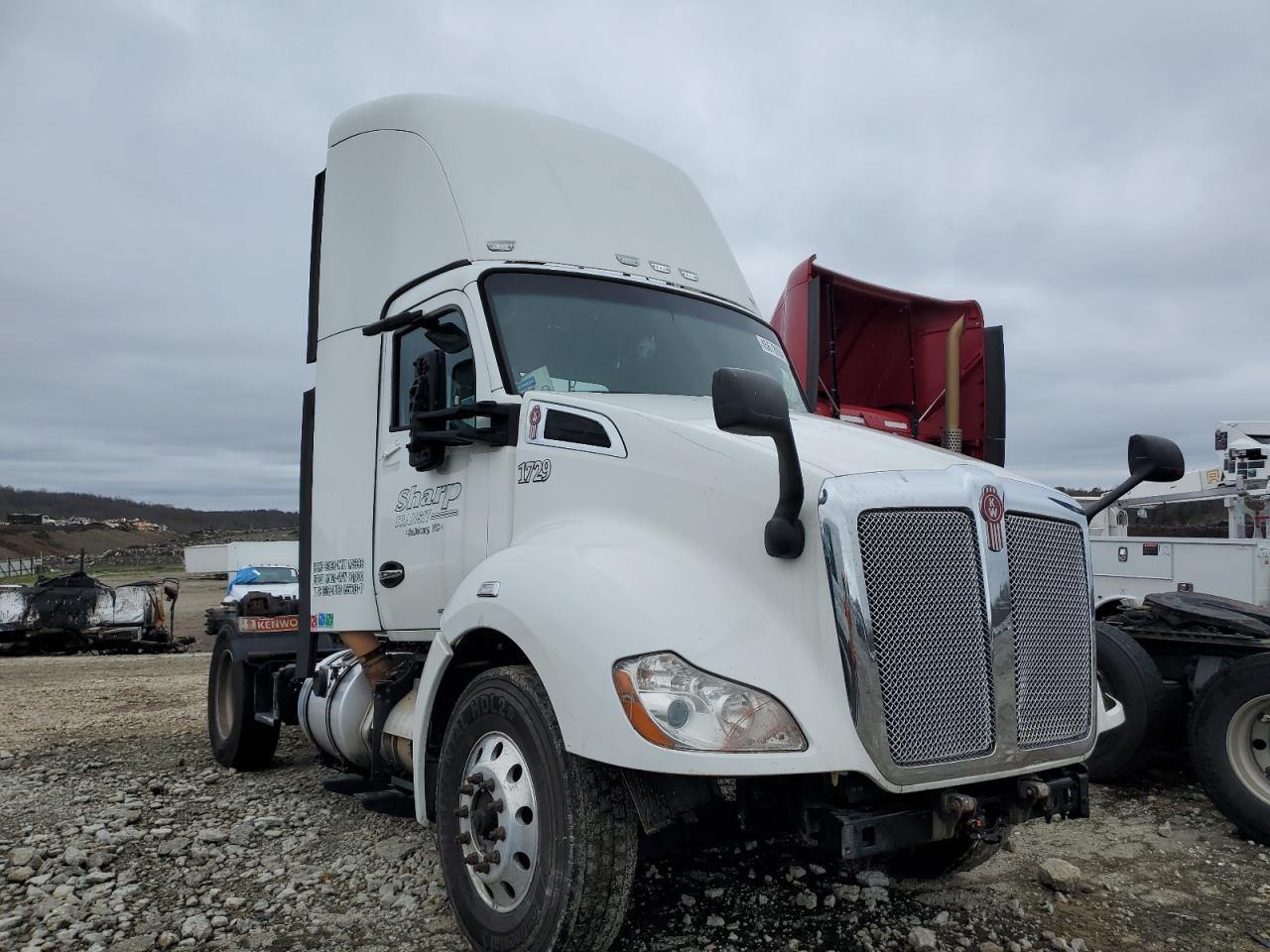Repairable Pickup Trucks: A Guide to Longevity, Economy, and Self-Reliance pickup.truckstrend.com
In an era dominated by increasingly complex and disposable consumer goods, the concept of a "repairable" vehicle stands out as a beacon of practicality, sustainability, and economic wisdom. Nowhere is this more evident than in the world of pickup trucks. A repairable pickup truck isn’t just a vehicle; it’s an investment in longevity, a commitment to self-reliance, and a testament to the enduring value of robust, straightforward engineering.
At its core, a repairable pickup truck is designed with maintenance and serviceability in mind. This means readily available parts, logical mechanical layouts, and systems that can often be diagnosed and fixed without proprietary tools or specialized software accessible only to dealerships. Unlike many modern vehicles that integrate complex, sealed units and intricate electronics, repairable trucks offer a refreshing simplicity that empowers owners to perform their own diagnostics, undertake repairs, and extend the life of their beloved workhorses for decades. The importance of such vehicles cannot be overstated: they offer significant cost savings over their lifetime, reduce environmental impact by delaying obsolescence, and foster a valuable connection between owner and machine.
Repairable Pickup Trucks: A Guide to Longevity, Economy, and Self-Reliance
The Philosophy of Repairability: Why It Matters
The shift towards repairable vehicles, particularly trucks, is driven by a confluence of compelling reasons:
- Economic Benefits: The most immediate and tangible advantage is financial. Repairable trucks typically boast a lower Total Cost of Ownership (TCO). When parts are affordable and widely available, and labor costs are reduced (or eliminated entirely if you DIY), the long-term expenses plummet. Extending a truck’s life from 10 to 20 or even 30 years means deferring the significant cost of purchasing a new vehicle, effectively saving tens of thousands of dollars.
- Environmental Responsibility: Every new vehicle produced carries a substantial environmental footprint, from raw material extraction and manufacturing to transportation. By keeping a vehicle on the road for longer, we reduce the demand for new production, minimize waste, and contribute to a more sustainable consumption model. Repairing is inherently more eco-friendly than replacing.
- Self-Reliance and Empowerment: Owning a repairable truck fosters a deep sense of accomplishment and self-reliance. Learning to diagnose a problem, source the part, and fix it yourself is incredibly empowering. It builds practical skills, demystifies complex machinery, and provides a level of independence from expensive professional services.
- Reliability and Longevity: Ironically, the "simpler" designs of many repairable trucks often equate to greater long-term reliability. Fewer complex electronic systems mean fewer points of failure. Older, well-maintained engines and transmissions, built with more robust materials and less stringent weight-saving measures, can often outlast their modern counterparts, proving the adage that "they don’t build ’em like they used to."
- Value Retention: While older trucks depreciate initially, well-maintained repairable models can often hold or even appreciate in value, especially those with cult followings or desirable powertrains. Their robust nature and ease of service make them attractive to a niche market, ensuring they remain desirable assets.

Hallmarks of a Repairable Pickup Truck – What to Look For
Identifying a truly repairable pickup truck involves looking beyond the shiny paint and modern amenities. It’s about evaluating its fundamental design and aftermarket support:
- Mechanical Simplicity: Prioritize vehicles with fewer complex electronic control units (ECUs), simpler sensor arrays, and straightforward mechanical linkages. For instance, a mechanically injected diesel engine (like the legendary 5.9L Cummins 12-valve) is often far easier to diagnose and repair than a common-rail, electronically controlled modern diesel. Look for trucks where components are accessible without dismantling half the vehicle.
- Parts Availability & Affordability: This is paramount. A repairable truck needs a robust aftermarket parts supply chain. This includes new OEM (Original Equipment Manufacturer) and aftermarket parts, but also a healthy supply of used parts from salvage yards. Common components shared across multiple models or years are a bonus.
- Serviceability & Accessibility: Can you easily reach spark plugs, filters, belts, and common sensors? Are bolts standard sizes, or do they require specialized tools? Is there ample room to work in the engine bay and underneath the truck? Clear diagnostic ports (like OBD-I or simple OBD-II on older models) are also key.
- Robust Frame and Drivetrain: A strong, durable ladder frame and proven engine/transmission combinations are foundational. These are the components that typically dictate the ultimate lifespan of a truck. Rust resistance of the frame and body panels is also a critical consideration for longevity.
- Community & Documentation: A vibrant online community (forums, social media groups) dedicated to a specific truck model is an invaluable resource. This signifies a shared passion for the vehicle and a collective knowledge base for troubleshooting and repair guides. Availability of comprehensive repair manuals (Haynes, Chilton, or factory service manuals) is also crucial.


Examples of highly repairable trucks often include:
- Ford F-Series (7th-10th Gen, especially 1980s-2000s models): Particularly the F-250/350 with the 7.3L Powerstroke diesel or the F-150 with the 300 inline-six or 5.0L/5.8L V8s. Their parts are abundant, and mechanical systems are relatively simple.
- Chevrolet C/K Series (GMT400 platform, 1988-1998): With the venerable 350ci (5.7L) V8 or 4.3L V6, these trucks are known for their simplicity, reliability, and vast aftermarket support.
- Dodge Ram (2nd Generation, 1994-2002): Especially popular for the 5.9L Cummins diesel (12-valve and 24-valve) and the 5.9L Magnum V8. Their solid axles and robust powertrains make them favorites for repair and modification.
Practical Steps to Owning and Maintaining a Repairable Truck
Embarking on the journey with a repairable truck requires a proactive mindset and a willingness to learn.
- Thorough Pre-Purchase Inspection: This is perhaps the most critical step. Don’t rush. Look for rust in the frame, body panels, and brake lines. Check for fluid leaks, listen for unusual engine noises, and test all functions. A compression test on the engine and a thorough transmission check are highly recommended. If possible, have a trusted mechanic (especially one familiar with older trucks) perform a pre-purchase inspection.
- Assemble an Essential Tool Kit: You don’t need a professional garage overnight, but a basic set of metric and standard wrenches, sockets, screwdrivers, a multimeter, a floor jack, jack stands, and a simple OBD-II scanner (for models 1996 and newer) are indispensable. As you tackle more complex jobs, you can expand your collection.
- Invest in Learning Resources: Purchase a physical repair manual (Haynes, Chilton) specific to your truck. Join online forums and Facebook groups dedicated to your model. Watch YouTube tutorials – there’s a wealth of information available from experienced DIYers.
- Embrace Preventative Maintenance: This is the bedrock of longevity. Stick to or even exceed recommended service intervals for oil changes, filter replacements (oil, air, fuel), fluid flushes (coolant, transmission, differential), and lubrication of chassis components. A well-maintained truck rarely leaves you stranded.
- Tackle Common Repairs Systematically: Start with simpler tasks like brake jobs, fluid changes, belt replacements, or sensor swaps. As your confidence grows, you can move on to suspension components, cooling system overhauls, or even basic engine tune-ups. Each successful repair builds skills and saves money.
- Know Your Limits: While self-reliance is empowering, it’s also important to recognize when a job is beyond your current skill level or requires specialized equipment. Don’t hesitate to seek professional help for complex issues like transmission rebuilds, internal engine work, or advanced electrical diagnostics. Finding a trustworthy independent mechanic specializing in older vehicles can be invaluable.
Challenges and Solutions in the World of Repairable Trucks
While highly rewarding, owning a repairable truck isn’t without its unique set of challenges.
- Finding a Well-Maintained Example: Many older trucks have led hard lives. Sifting through neglected examples to find one that hasn’t been abused or rusted into oblivion can be a significant undertaking.
- Solution: Be patient, expand your search radius, and always prioritize a thorough pre-purchase inspection. Look for detailed service records.
- Rust: Especially in colder climates where road salt is used, rust is the perennial enemy of older vehicles. It can compromise structural integrity and make repairs difficult.
- Solution: Focus on trucks from drier climates if possible. For existing rust, address it promptly with rust converters, primers, and paint. Regular undercoating can help prevent new rust formation.
- Obsolete or Hard-to-Find Parts: While common wear items are usually abundant, some specific trim pieces, interior components, or obscure electrical parts for very old models might be scarce.
- Solution: Tap into online communities and specialized vintage parts suppliers. Salvage yards are treasure troves. Sometimes, modern equivalents or custom fabrication might be necessary.
- Emissions Regulations: Older trucks, particularly diesels, might face challenges meeting modern emissions standards in some regions, potentially restricting their use or requiring costly modifications.
- Solution: Research local and state regulations before purchasing. Be aware that older vehicles often have grandfathered exemptions, but this varies.
- Lack of Modern Safety Features: Older trucks typically lack advanced safety features like multiple airbags, anti-lock braking systems (ABS), traction control, and electronic stability control (ESC).
- Solution: Drive defensively, maintain the braking and steering systems meticulously, and consider aftermarket upgrades like better headlights or modern tire technology to enhance safety where possible.
Concluding Summary
The repairable pickup truck stands as a powerful antidote to the planned obsolescence that pervades modern manufacturing. It’s a testament to the enduring value of robust engineering, accessible design, and the human desire for self-sufficiency. Owning and maintaining such a vehicle is more than just a means of transport; it’s a lifestyle choice that champions economic prudence, environmental responsibility, and the satisfaction of working with your hands.
By understanding what makes a truck repairable, diligently maintaining it, and embracing the inevitable challenges with a problem-solving mindset, you can enjoy a dependable, long-lasting, and truly personal vehicle that will serve you faithfully for decades. In a world that often pushes us towards replacement, the repairable pickup truck invites us to embrace the "fix-it" mentality, proving that sometimes, the old ways are indeed the best ways.
Price Table: Popular Repairable Pickup Trucks & Common Repair Insights
Please note: Prices are highly variable based on condition, mileage, region, and specific trim/engine options. "Common Part Cost" represents a typical aftermarket price range for a quality replacement. "DIY Repair Difficulty" is on a scale of 1 (very easy) to 5 (moderately challenging for a DIYer).
| Model (Typical Years) | Typical Purchase Price Range (Used) | Common Part Cost (e.g., Brake Kit, Water Pump, Alternator) | DIY Repair Difficulty (1-5) | Notes/Why Repairable |
|---|---|---|---|---|
| Ford F-150/F-250 (OBS – 1992-1997) | $5,000 – $20,000+ | Brake Kit: $100-200 Water Pump: $50-100 Alternator: $80-150 |
2-3 | Abundant parts, strong aftermarket support, simple electronics. 7.3L Powerstroke diesel (F-250/350) and 300 I6/5.0L V8 (F-150) are legendary for reliability. |
| Chevy C/K 1500/2500 (GMT400 – 1988-1998) | $4,000 – $18,000+ | Brake Kit: $90-180 Water Pump: $40-80 Alternator: $70-130 |
2 | Simple, straightforward design. 5.7L (350ci) V8 is ubiquitous and easy to work on. Vast parts availability from GM and aftermarket. Excellent for first-time DIYers. |
| Dodge Ram 1500/2500 (2nd Gen – 1994-2002) | $6,000 – $25,000+ | Brake Kit: $110-220 Water Pump: $60-120 Alternator: $90-160 |
2-4 | Iconic styling. 5.9L Cummins diesel (2500/3500) is highly sought after and known for extreme longevity and ease of repair. 5.9L Magnum V8 (1500) is also very robust. Parts are widely available. Diesel specific repairs can be more complex (4). |
| Toyota Tacoma (1st Gen – 1995-2004) | $8,000 – $25,000+ | Brake Kit: $80-150 Water Pump: $40-70 Alternator: $70-120 |
2 | Legendary Toyota reliability. Simple 4-cylinder and V6 engines are durable and easy to service. Excellent parts availability. Known for frame rust, so inspect thoroughly. |
| Nissan Frontier (1st Gen – 1998-2004) | $5,000 – $15,000+ | Brake Kit: $80-150 Water Pump: $40-70 Alternator: $60-110 |
2-3 | Often overlooked, but robust and reliable. Simple engines (2.4L 4-cyl, 3.3L V6) and drivetrain. Good parts availability, though perhaps less than domestic giants. |
Frequently Asked Questions (FAQ) about Repairable Pickup Trucks
Q1: What exactly makes a truck "repairable" compared to a standard truck?
A1: A repairable truck is designed with ease of maintenance and serviceability in mind. This typically means simpler mechanical systems (less reliance on complex electronics), readily available and affordable parts (OEM and aftermarket), logical component layouts that allow for easy access, and a strong community/resource base for DIYers. Modern trucks often have highly integrated systems, proprietary parts, and require specialized diagnostic tools, making them less "repairable" for the average owner.
Q2: Are modern pickup trucks repairable, or is this concept only for older models?
A2: Generally, older models (pre-2000s, and some into the early 2000s) are considered more "repairable" due to their simpler designs. Modern trucks, while highly capable, incorporate vast amounts of complex electronics, intricate emission systems, and highly integrated components that make DIY repairs much more challenging and often require specialized software or tools. Some fundamental maintenance (oil changes, tire rotations) is still possible, but major system repairs are increasingly difficult for the average owner.
Q3: What are some good examples of highly repairable pickup trucks?
A3: Excellent examples include the Ford F-Series (especially 1980s-2000s models like the OBS F-250/350 with the 7.3L Powerstroke), Chevrolet C/K Series (GMT400 platform from 1988-1998), Dodge Ram 2nd Generation (1994-2002, particularly with the 5.9L Cummins diesel), and first-generation Toyota Tacomas (1995-2004). These models have large owner communities, abundant parts, and straightforward mechanical designs.
Q4: Is it significantly cheaper to own a repairable truck than a new one?
A4: Absolutely. The savings come from several areas: lower initial purchase price, much cheaper parts, and significantly reduced labor costs (especially if you do repairs yourself). While a new truck might cost $40,000-$80,000+, a well-maintained repairable truck can be acquired for $5,000-$20,000 and maintained for a fraction of the cost of monthly payments and dealership service bills over its extended lifespan.
Q5: Where can I find parts for older, repairable trucks?
A5: Parts are generally abundant. You can find them at:
- Auto Parts Stores: Major chains (AutoZone, O’Reilly, Advance Auto Parts) stock common wear items.
- Online Retailers: RockAuto, Amazon, eBay, and specialized parts websites.
- Salvage Yards/Junk Yards: Excellent source for used OEM parts, especially for body panels or less common components.
- Dealerships: For specific OEM-only parts, though often more expensive.
- Online Communities: Forums and Facebook groups for specific models often have members selling used parts or recommending suppliers.
Q6: What basic tools do I need to start working on my repairable truck?
A6: A good starting kit includes:
- Metric and SAE (standard) wrench sets
- Socket sets (metric and SAE, 3/8" and 1/2" drive with ratchets)
- Screwdrivers (Phillips and flathead)
- Pliers (various types)
- Hammer
- Floor jack and sturdy jack stands
- Torque wrench
- Multimeter (for electrical diagnostics)
- OBD-II scanner (for 1996+ models)
- Safety glasses and gloves
Q7: How do I learn to work on my truck if I have no mechanical experience?
A7: Start small and build confidence!
- Repair Manuals: Invest in a Haynes or Chilton manual specific to your truck.
- YouTube: Search for videos on specific repairs for your model. There are countless tutorials.
- Online Forums & Groups: Join dedicated communities. Ask questions, read through past discussions, and learn from experienced owners.
- Start Simple: Begin with basic maintenance like oil changes, tire rotations, and air filter replacements.
- Don’t Be Afraid to Ask: Most DIY communities are incredibly supportive of new learners.
